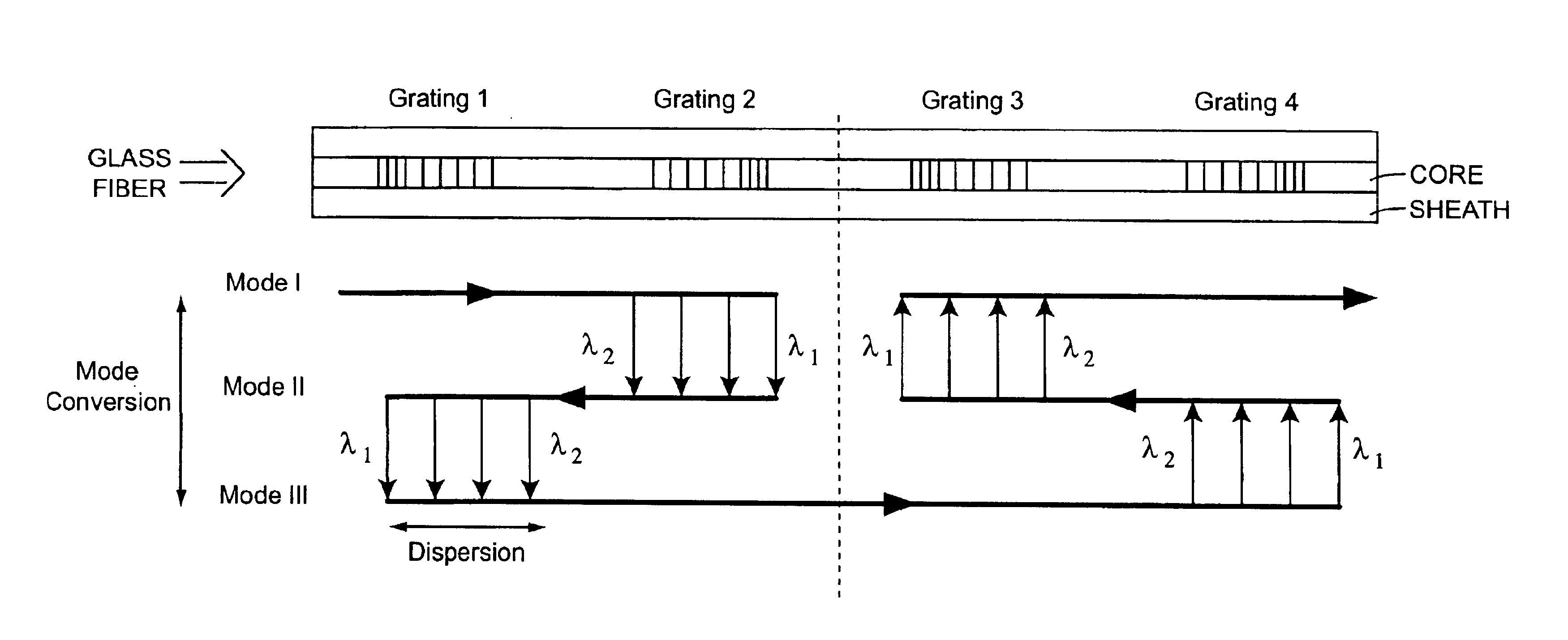Fiber transmission element for generating a chromatic dispersion
a transmission element and fiber technology, applied in the direction of optics, instruments, optical light guides, etc., can solve the problems of occupying a large space, high cost, and a large amount of space, and achieve the effect of improving the coupling effect of different modes in fiber bragg gratings
- Summary
- Abstract
- Description
- Claims
- Application Information
AI Technical Summary
Benefits of technology
Problems solved by technology
Method used
Image
Examples
Embodiment Construction
[0013]The object of the invention is to specify a component which produces specific, normal or anormal dispersion, which can be predetermined, with a small physical size and with low cost, and whose losses are as low as possible.
[0014]One solution of this object, according to the invention, is specified in patent claim 1. Developments of the invention and an application are the subject matter of claim 2 and the subsequent claims.
[0015]According to the invention, a transmission component is provided for producing (positive or negative) chromatic dispersion which can be predetermined and is suitable, for example, for compensating for the dispersion in a glass fiber optical waveguide. Not only the LP01 fundamental mode, but also at least one LPmn mode can be carried in the component according to the invention. To this end, the transmission component according to the invention has two pairs of Bragg gratings, of which, for example, each pair may have at least one chirped Bragg grating. ...
PUM
 Login to View More
Login to View More Abstract
Description
Claims
Application Information
 Login to View More
Login to View More - R&D
- Intellectual Property
- Life Sciences
- Materials
- Tech Scout
- Unparalleled Data Quality
- Higher Quality Content
- 60% Fewer Hallucinations
Browse by: Latest US Patents, China's latest patents, Technical Efficacy Thesaurus, Application Domain, Technology Topic, Popular Technical Reports.
© 2025 PatSnap. All rights reserved.Legal|Privacy policy|Modern Slavery Act Transparency Statement|Sitemap|About US| Contact US: help@patsnap.com


